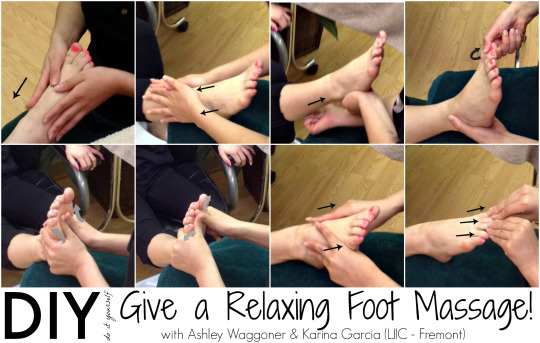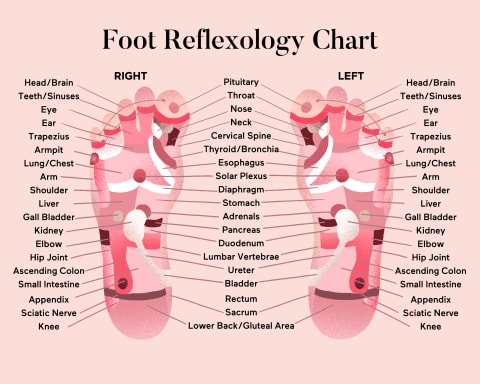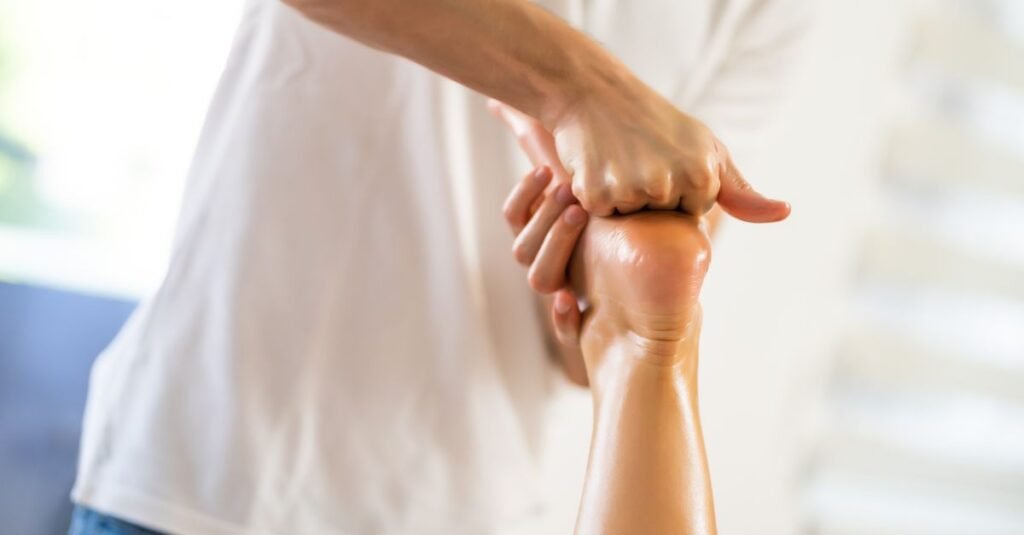Discover the art of DIY Foot massage ways for relaxation and relief! Learn simple way and tips for a soothing at- home Foot massage to rejuvenate your bases and melt down stress.
With your busy lifestyle and always being on your feet, your feet take a beating and deserve some extra TLC. While a professional foot massage at a spa can be a luxurious treat, it’s not always practical or affordable as a regular indulgence. The good news is you can achieve a soothing foot massage right at home with a few simple techniques and tools you already have. In just a few minutes a day, you can transform your tired feet and leave them feeling relaxed and rejuvenated. Read on to discover six DIY foot massages you can do yourself using items you likely have on hand. Your feet will thank you.
Why DIY Foot Massages Are Beneficial for Your Feet

Credit: ljic.edu
Giving yourself a foot massage has many benefits for your overall foot health and comfort. Performing regular foot massages can help relieve pain from conditions like plantar fasciitis or general soreness from being on your feet all day. Foot massages also increase flexibility and range of motion in your ankles and feet.
Some of the major benefits of DIY foot massages include:
•Improved circulation. Massaging your feet helps stimulate blood flow to your feet and legs. Improved circulation brings more oxygen to your feet and helps reduce inflammation.
•Relief from foot pain. Gentle massaging pressure applied to areas of pain in your feet, such as the arch or heel, can help relieve discomfort from conditions like plantar fasciitis or general soreness.
•Increased flexibility. Massaging your feet helps loosen tight muscles and connective tissue, increasing flexibility and range of motion in your ankles and feet. This is especially helpful for people who stand or walk for long periods.
•Stress relief. Foot massages are relaxing and help relieve tension. Massaging pressure points in your feet can help calm your mind and body, reducing stress and anxiety.
•Improved balance and posture. Flexibility and range of motion in your feet and ankles is important for balance, mobility, and good posture. DIY foot massages help ensure your feet remain flexible and mobile so you can maintain proper balance and posture.
To summarize, DIY foot massages provide both physical and mental benefits for your feet and overall well-being. Set aside just 10-15 minutes a few times a week to massage your feet and reap the rewards of healthier, happier feet. Your feet do a lot for you, so show them some love!
Prepare Your Feet for Maximum Relaxation

Credit: api.watsons.com.my
To get the most out of your DIY foot massage, you’ll want to properly prepare your feet. Follow these steps to relax your feet and increase blood flow before beginning the massage:
- Soak your feet in warm water. Soaking your feet in warm water helps loosen up your feet muscles and softens your skin, allowing for deeper massage penetration. Add some epsom salt to the water, which helps reduce inflammation. Soak your feet for 10 to 15 minutes.
- Exfoliate your feet. Use a foot file or scrub to remove dead skin from your feet, especially on your heels and the balls of your feet. Exfoliating removes the dead layers of skin and allows moisturizers and massage oils to absorb better. Gently rub the file over your feet using small circular motions. Rinse and pat your feet dry when done.
- Apply a moisturizing foot cream. Massage a rich foot cream, lotion, or ointment into your feet and toes. Look for a cream containing hydrating ingredients like shea butter, jojoba oil, beeswax, or cocoa butter. Massage the cream into your feet using broad strokes. Pay extra attention to any cracked or callused areas.
- Trim your toenails. Trim your toenails to avoid any snags or cuts during the massage. Use nail clippers and file the nails into a smooth curve.
By following these simple steps to prepare your feet, you’ll be able to experience deeper relaxation and reap greater benefits from your DIY foot massage. Your feet will thank you for the extra TLC! Let the pampering begin.
DIY Foot Massage Techniques for Optimal Relaxation
Your feet bear the weight of your entire body and are frequently neglected. Applying self-massage techniques to your feet can help relieve pain and tension, improving your overall wellbeing.
Apply pressure to reflexology points
Reflexology is the practice of applying pressure to specific points on the hands and feet that correspond to organs and systems in the body. Firmly massage the solar plexus point, located in the center of the ball of your foot, to relieve stress and tension. Rubbing the lung point, found on the ball of your foot below the toes, may help open airways and improve breathing. Massage the pituitary gland point, in the center of the big toe pad, to stimulate hormone production and balance.
Use massage tools
Tools like massage balls, rollers and sticks can enhance a DIY foot massage. A golf or lacrosse ball is ideal for pressing into tight arches and providing relief to sore heels. Foot rollers, which you roll your feet over, help stretch and loosen plantar fascia and other connective tissue. Massage sticks allow you to apply direct pressure to specific areas of discomfort.
Practice reflexology and acupressure techniques
Applying finger pressure to reflexology points on the soles of your feet can relax the body and mind. Use your knuckles or thumbs to apply firm pressure to the solar plexus, lung and pituitary points. Acupressure, like reflexology, focuses on specific pressure points. The relaxation point, located between your big toe and second toe, and the arch point, found in the center of your arch, are especially helpful for unwinding tension.
A DIY foot massage, utilizing these techniques, can work wonders for comfort, mobility and mood. Set aside time each week to show your feet some love and reap the rewards of improved wellbeing and balance in both body and mind. Your feet will thank you for it.
Refreshing Foot Soaks to Soothe Your Feet

Credit: mindbodygreen-res.cloudinary.com
Foot soaks are a simple yet effective way to relieve tension and rejuvenate your feet. After a long day, your feet deserve some tender loving care. The following foot soaks will refresh and soothe your feet, leaving them soft and revitalized.
Epsom Salt Soak
Epsom salt, or magnesium sulfate, is excellent for relieving aches and pains. An Epsom salt foot soak reduces inflammation and swelling in the feet while soothing sore muscles and joints. Add 1-2 cups of Epsom salt to a foot bath or bucket filled with warm water. Soak your feet for 15-20 minutes. The magnesium in the salt will be absorbed through your skin, providing quick relief.
Baking Soda Soak
Baking soda is a natural exfoliant that removes dead skin and softens calluses. It also helps eliminate foot odor by balancing the pH levels of your feet. Add 1/2 cup of baking soda to a foot bath filled with warm water. Soak your feet for 10 minutes and then use a foot file or pumice stone to scrub away dead skin. Rinse and moisturize your feet when done. Your feet will feel baby soft.
Essential Oil Soak
Essential oils like lavender, peppermint, and tea tree oil have therapeutic properties that can relax your feet. Add 10-15 drops of your chosen essential oil or oil blend to a foot bath filled with warm water. The oils will infuse into the water and release their aromatic benefits. Soak your feet for at least 15 minutes to experience the full relaxing effects.
Oatmeal Soak
An oatmeal foot soak softens and soothes dry, itchy feet. Oatmeal contains anti-inflammatory and moisturizing agents that provide relief for conditions like eczema or psoriasis. Add 1 cup of colloidal oatmeal or rolled oats to a foot bath and fill with lukewarm water. Soak your feet for 15-20 minutes. The oatmeal will coat your feet and relieve any irritation while deeply hydrating the skin. Rinse and pat dry when done.
These foot soaks are simple to make using ingredients you likely have at home. Set aside time for regular foot soaks, especially after a long day on your feet. Your feet provide the foundation to keep you moving, so show them the care and comfort they deserve.
FAQ About DIY Foot Massages
Performing regular DIY foot massages can provide many benefits for your feet and overall health. Massaging your feet helps relieve stress and tension, improves circulation, and reduces pain from conditions like plantar fasciitis. It is recommended to massage your feet 2-3 times a week for 10-15 minutes at a time for maximum benefit.
What type of oil should I use?
Coconut, olive, or almond oil work well for foot massages. They moisturize the skin and allow your hands to glide easily over your feet. Essential oils like peppermint, lavender or eucalyptus can also be added to a carrier oil for added therapeutic benefits.
How long should I massage for?
Aim for 10 to 15 minutes per foot to experience relaxation and pain relief benefits. Use your knuckles or a foot massage tool like a reflexology stick to apply firm and consistent pressure. Focus on areas that hold a lot of tension like the arches, heels and balls of your feet.
What are the benefits of regular foot massages?
- Improves circulation which brings more oxygen to your feet and reduces pain.
- Relieves stress and tension. Foot massages stimulate pressure points that correspond to areas all over your body.
- Reduces pain from conditions like plantar fasciitis, heel spurs, and metatarsalgia.
- Promotes relaxation and sleep. A foot massage before bed can relax your entire body making it easier to fall asleep.
FAQ About DIY Foot Massages
- How often should I massage my feet? For maximum benefits, aim for 2-3 10-15 minute foot massages per week. Be sure to massage both feet equally.
- What types of oils should I use? Coconut, olive and almond oil are excellent for foot massages. You can also add essential oils like peppermint or lavender for added benefits.
- How long should I massage for? 10-15 minutes per foot is recommended for relaxation and pain relief. Focus on areas like arches, heels and balls of feet.
- What are the benefits? Improved circulation, reduced pain, stress/tension relief, and relaxation/sleep promotion.
- What areas should I focus on? Arches, heels, balls of feet and between toes. These areas hold a lot of tension and pressure points.
In summary, performing regular DIY foot massages at home provides both physical and mental benefits for your health and well-being. Following the guidelines above will help you get started with an effective foot massage routine. Be sure to use a quality oil, massage for 10-15 minutes at a time and focus on key areas of the feet that need attention. Your feet will thank you!
Conclusion
After a long day of standing, walking, or exercising, your feet take a beating. Give your hardworking feet the relief and rejuvenation they deserve with these DIY foot massage techniques and treatments. Using items you already have at home, you can pamper your feet for just a few minutes and experience instant relaxation and stress relief. Your feet do so much for you, so take the time to return the favor. With regular foot massages and care, you’ll keep your feet healthy, flexible, and pain-free for years to come. Treat your feet today and feel the benefits throughout your whole body. Your feet will thank you.




